|
It is common for humans to struggle with winter weight gain. Whether the struggle is in preventing it, or losing the weight after the fact, seasonal weight gain is a fact of life for a lot of animals that live in seasonal climates. With the onset of colder temperatures — a time when food items become scarce in the wild — activity levels drop, metabolism slows down, and hibernation mode sets in. This is not limited to animals in the wild, however. There is not always a plethora of seasonal vegetables available to some pig parents during the colder months. This makes it more difficult to find nutritious choices for your pigs diet. The fact that it gets darker earlier in the day makes feeding times one of the keys to prevention. As with people, eating right before you go to bed leaves unburned calories leading to weight gain. Changing the time you feed the last meal of the day can also allow your pig to have the opportunity to burn off those excess calories by means of playing, digging or just moving around after a meal. Darkness means bedtime. If it gets dark at 530pm, most pigs are ready for bed at 530pm. Feeding the last meal of the day a couple of hours before darkness sets in allows your pig the opportunity to burn off some of those calories versus eating a big meal and going right to bed a short time later. If this is possible for you to feed your pig an earlier dinner, and you haven’t been, try doing it 30 minutes earlier each day until you reach your desired time instead of feeding your pig 2 hours early one evening and their bellies telling them its time to eat much earlier the following morning. I personally feed at 6am and 3pm. These are times that work for me. Occasionally there are days that I am a few minutes late with dinner, and my pig lets me know. But overall, I believe allowing the time to burn off the calories does impact winter weight gain. Even though we have devised ways to stay warm and active, and to stockpile plenty of food to get us through the winter months, our bodies still react with the age-old evolutionary methods for preservation. This is as true for humans as it is for our domesticated pets, and this is where that struggle lies. Luckily for us, pellets are available year round usually, but the selection of foods to add to these pellets are not. Determine what winter veggies are available to you beforehand and check the nutritional content to be sure you aren’t compounding the problem by adding high calorie or non-nutritious items to your pigs diet. We have added a link to our nutrition section to a search engine for ALL foods and this site can tell you the nutrition content of practically any food. This is a great tool for those of us who aren't nutrition experts and don't necessarily know which foods are best. Click here to view our pig nutrition page and look for the USDA.gov link for the nutrition link. When a pig that is used to being outside all day digging in the yard is now only outside for speedy breaks, or a pig that is accustomed to a sunbathing outdoors is now reluctant to spend much time outdoors in the cold, it naturally follows that the food that has been consumed is not being burned as energy resulting in weight gain. Click here to see our recommended product page with a list of treat dispensers that can be used for feedings. Meanwhile, we are eating more at home, making large meals for family get-togethers and I am sure there are some at the dinner table who may “accidentally” drop or even purposely slip a few human food items to your pig. NIP THIS IN THE BUD! Make sure you tell your guests that your pig is NOT to eat human food unless you have prepared some in special way just for him/her. Prevention is Key If you don’t start, you’ll never have to stop. This is a motto to live by. If you don’t gain weight, you won’t have to lose weight. If you never start feeding sugary treats, you will never have to find alternative treats for your pig, etc. If your pig is normally active and in good physical shape, create an exercise plan for the winter months so that he or she can continue to be active. This might be games with indoor rooting boxes, or other enrichment items, a romp through the snow in the backyard, once you have shoveled a path of course, and a brisk walk with your pig when the weather allows for it. Just be sure to get out as often as possible so that both your pig and you can work off the excess calories. Click here to see our enrichment page with ideas of things you can do to keep your pig busy or entertained. Enrichment is important for many reasons, but one of them is to prevent boredom and a second is to encourage activity. If it is too difficult to maintain a regular exercise routine during the coldest months, consider cutting back on calorie intake to compensate for the lowered physical and metabolic activity. Fewer treats with a gradually decreased amount of feed being fed should cover the difference. Weight Loss Plans If your pig is already overweight, a bit more work is going to be required, since you will most likely need to maintain the current weight, even as it is over the ideal. Unless your veterinarian has advised a specific weight loss plan with indoor exercise, you will need to take care in how much you exercise your pig or decrease your pig’s meal intake. Treats should be eliminated, but food should not be cut back dramatically — again, unless your vet has specifically advised it as a course of action. Pigs do not lose weight from exercise; they can’t physically keep their heart rate in the desired “cardio” range to burn enough calories to actually lose weight. So you must be creative. You can use treat dispensers to feed your pig forcing them to move around to get their breakfast. If there isn’t snow on the ground, you can put their pellets directly on the ground so they have to find them. (I am not a big fan of putting food on the ground/dirt for any pet, but to encourage exercise, I find this to be appropriate) Before embarking on any weight loss or exercise plan it is important to have your pig checked for underlying conditions that may be contributing to the weight gain. Only then can you and your veterinarian construct a sensible diet and structured, achievement oriented exercise program. We will try our best to give you individualized tips to help you on your journey to weight loss with your pig. We can tell you nutritious foods to add into the diet as well as appropriate amounts of pelleted feed to aid in the weight loss you desire. You must be consistent and you must be accurate. Click here to view our page regarding how to balance activity with the foods you chose to feed your pig. Please check your feed for any signs of spoilage as well. Winter months bring about a lot of moisture and with moisture comes mold. Sometimes mold is at the bottom of the feed and by the time you see it, the spores have been in ALL the feed and possibly have affected your pigs health. Click here to learn more about spoiled or bad feed. Monitoring your pigs’ weight
If you are concerned about your pig gaining weight during the winter, schedule a visit with your veterinarian before the start of the winter season. Your doctor will record your pig’s weight so that it can be gauged with any further gains or losses. Ask your veterinarian to show you how to check for certain landmarks signs that your pig is overweight or obese. The belly and neck are two of the spots on the body that are most likely to indicate abnormal weight gain, when it does occur. Your pigs belly shouldn’t be close to the ground. There should be plenty of clearance between the dirt and the “potbelly” your pig may have. Some pigs do not have that potbellied appearance at all, so in these pigs, a sudden increase in the size of the belly could indicate something more going on. If your pig has a history of weight issues, it is also important that you measure him or her once-a-month to make sure the pounds/inches aren’t creeping up and that the current weight is being maintained as needed. You can click here to see how to measure a pig and use the farmer’s almanac method of estimating your pigs weight. This has been a fairly accurate tool to estimate weight.
0 Comments
As a healthcare professional, we use algorithms quite often. We thought it would be fun to create one for pigs. Enjoy! (By the way, the answer is always yes!) Find a pig rescue or sanctuary by clicking here. There are so many avenues to help others, you just need to find your pathway to do it!!!! Research. Rescue. Foster. Adopt. Educate. Transport. Donate. Volunteer. Advocate.
As strange as it may seem the most commonly reported deficiency disease is inadequate protein and energy intake, a polite way to describe starvation. Whether through ignorance or indifference on the part of their owners, there are a lot of animals maintained in a state of malnutrition, particularly in the winter months when outdoor pigs need to have their feed brought to them. Pigs do not lose weight through exercise, they do not do cardio, and even when they have a case of the “zoomies”, it’s very short-lived and not enough to truly burn off excess calories.
There is no “one amount of feed fits all”. Each pig is unique in his or her activity and circumstance, so each pig will get a varying amount of feed. When animals are fed adequate quantities of a variety of feedstuffs, such as hay or pasture, grains and silage, deficiency diseases are generally not a problem. Occasionally, however, specific mineral, trace element or vitamin deficiencies will occur as a result of such things as a deficiency in the soil, feed spoilage or weather damage, oxidation in the storage and/or overabundance of one element tying up another to make it unavailable. Parakeratosis is a skin disease that occurs in pigs that are fed exclusively a commercial diet. It does not occur in pigs with access to pasture normally. The cause is an actual zinc deficiency in the diet or a relative deficiency induced by an overabundance of calcium. It usually responds well to the addition of zinc as a supplement. What is Parakeratosis? The principle effect of the disease is less efficient feed conversion. The skin lesions first appear as red areas. These areas become papules, which develop crusts that may coalesce. There is typically a symmetrical involvement of the limbs, ears and head. The crusts become quite think and crack easily. Secondary bacterial infection of the affected skin is not unusual. Zinc added to the diet in the form of carbonate or sulfate relieves the symptoms rather rapidly. This can be avoided by ensuring the diet you are feeding your pig contains adequate amounts of zinc, by supplementation if necessary. Rickets is a disease of young animals caused by a dietary deficiency of calcium or phosphorous or a variety of both in addition to inadequate vitamin D, resulting in the failure of mineralization of long bones. The lesions can be noted, most pronounced as enlargements at the ends of the long bones, which are called epiphyses, where the bone growth occurs. (This needs to be confirmed by x-ray for a definitive diagnosis) This results in lameness and fractures, however, that alone isn’t sufficient for an accurate diagnosis because other diseases can also have similar signs. Rickets isn’t common, but is most likely to be found in young animals raised in confinement in an area where there is little to no sunlight. Specialized cells in the skin produce vitamin D under stimulation of ultraviolet rays from the sun. Although vitamin D can be added in the diet as milk replacer or grain, it does not occur naturally in sufficient quantity to prevent deficiency signs from developing if an animal is deprived from sunlight. Prevention of rickets is contingent on adequate phosphorous and calcium intake and regular exposure to the sunshine or vitamin D supplementation. Water deprivation is not commonly addressed as an actual deficiency because it is common sense that all animals need water. Most animals could go as long as a week without feed (though, let me add, we do NNOT recommend you test this theory) but ONE day without water and they are very uncomfortable, 2 days and they’re obviously sick and in 3 days, most will be dead. Hot weather hastens the onset of clinical signs. These include restlessness, bellowing, depression of appetite, dehydration and constipation. Convulsions and coma may occur prior to death. Similar signs occur when there is an overconsumption of salt with restricted or limited water intake. (Salt toxicity) Anemia is another deficiency disorder but can have many causes- hemorrhage, parasitism and diseases of red blood cells to name a few. Nutritional deficiencies can also result in depressed hemoglobin formation. Iron deficiency in piglets is probably the most common. Piglets are born with virtually no iron reserve and the iron in the mothers’ milk is usually inadequate to sustain them. Signs of iron deficiency anemia begin to appear at about 1 week of age, gradually increasing until the piglets are 1 month old. Affected piglets do not grow well, are prone to develop enteric infections and usually show signs of respiratory distress. This deficiency is most common in piglets who are raised indoors without access to soil. If they are allowed outside on the ground, it rarely occurs and one of the early and still effective procedures to control this is to place a shovel full of dirt in their pen or area for them to root around in. Goiter is the enlargement of the thyroid gland due to a deficiency of iodine. Soils in some areas, notably the Midwest and west coast, are deficient in iodine and animals (as well as people) raised in these areas may have a goiter. Severely deficient animals will be weak at birth or stillborn. Those that survive, if untreated, fail to grow and develop normally due to thyroid hormone deficiency. The disease is easily recognizable by the obvious enlargement of the gland located in the neck. Frequently, the skin is thick, edematous and flabby. This can be treated with great success to the supplementation of the diet with iodine. Osteomalacia, sometimes called adult rickets, is the deficiency of calcium in the diet, but the clinical signs are attributable to overactivity of the parathyroid gland. When the calcium in deficient in the diet over period of weeks to months, parathyroid hormone pulls compensating amounts out of the bones. Eventually the bones become sufficiently demineralized that they become deformed or fracture. Clinical signs include reluctance to move, lameness in general and overall unthriftiness. This is common in pigs because of them being maintained on high grain diets. Given a choice, most animals would prefer grain type feed over hay because it tastes better/good. This is likely why adult rickets is seen more often in “pet pigs” whose owners think feeding more grain is a kindness. After a diagnosis, treatment consists of rest and supplementation of calcium in the diet. Restoration of the normal calcium levels will NOT correct bone deformities but will restore normal bone strength, reducing the potential for future fractures. With all that being said, we have more and more messages about diets than ever before. Most feed a pelleted feed from companies who have targeted the mini pig community and that is what we recommend, in addition to the “extras” like veggies and/or the occasional fruit. However, there are pig lovers worldwide and not every country has access to mini pig feed. After doing A LOT of research, we have decided to add a natural diet section to the website. We are still gathering ALL the information to make it as inclusive as possible, and we still recommend you enlist your vet or someone with a nutrition degree to help you come up with a diet plan for your pig. Pigs have a lot of nutritional requirements that need to be met daily; leaving something out, especially over time, can affect your pig in a big way. Click here to view the natural diet page recently created. We ask that you speak to your vet and/or consult a professional nutritionist before attempting to provide your pig with a natural diet versus commercial feed. Is your pig itchy and you don't know why? Pigs often have dry skin. This is something most pig parents battle or have battled at one point or another. Let's address some of the common issues that cause dry flaky skin with our pet pigs. (Enjoy this video of sweet Oreo scratching his rear end and remember, nothing you have is off limits to a pig butt) 1. Pigs love to sunbathe. In the summertime, it is paramount that you use sunscreen on all pigs that are outside no matter what the skin pigmentation is. Laying in the sun=dry skin. 2. Hydration. Some of us have pigs that aren't big drinkers, in turn, they don't have the proper amount of water and that leads to dry skin. How can you correct this? Entice your pig to drink more water. Some add a small amount of juice to water, some add flavored water drops, some offer ice or sugarless Popsicles to their pigs in order to maintain a healthy level of hydration. Wet your pigs pelleted feed. Why you ask? 2 reasons. First, any additional water source is a good thing. Although it's not a lot, adding water to the feed does, in fact, add water to the diet. Second, the pellets are designed to swell giving your pig that "fullness" that they never seem to get. When pellets are left dry, you have to reply on them drinking enough water to swell the pellets internally. Why make them wait to feel full? Wetting the pellets beforehand gives you the opportunity to feed the pellets in the fuller state and in turn, your pigs belly will signal a fullness that they have enough to eat. ALWAYS make sure your pig has plenty of fresh water available to them. If necessary, have several water bowls outside in different areas and check them often to be sure they're not contaminated or dirty. Pigs will turn their nose up to a dirty water bowl. (And the biofilm that forms can pose a health threat) 3. Vitamin/mineral deficiency. This actually isn't a common thing if your pig is eating a manufactured diet from one of the major feed brands. These are companies who have spent time and effort formulating a diet specifically made for mini pigs. They have taken into account that owners will supplement the feed with fresh veggies and occasionally fruit and designed a formula of feed to match that algorithm. During a conference call I personally had with the head nutritionist at Purina, (who also owns the Mazuri brand of feed), they informed me that their raw ingredients are tested on a daily basis and slight modifications to their formulary is done daily; based on those results. They also constantly review emails they get and adjust the formulary based on customer satisfaction, such as adding more soy oil because of the complaints of dry skin in the mini pig population. If your pig is being fed a diet that mainly consists of a manufactured feed from a well known company, such as Purina/Mazuri, Manna-Pro, Champion by Ross Mill Farms, or any other brand name feed, in addition to fresh vegetables and fruits that you add, a vitamin or mineral deficiency is unlikely. You should always follow your vets advice regarding the type and amount of feed for your mini pig. If you do have questions, use the contact us link on the feed company's website. For Mazuri, this link sends an email that will go straight to the head of nutrition, not a customer service rep. I know this is factual because I have used the link and they contacted me back within 4 hours with a response for my question. 4. Pigs like to rub on things. They have tough skin. Most pigs have some areas of "hard" skin and in order to feel that relief from the itchiness, they will rub on corners of houses, tables, steps, buildings, tree trunks, or objects laying in the yard. We recommend a product called Scratch N All as a relief tool that can be used inside or outside (click here to learn more about scratch n all) "Forking" is another method used to help relieve your pigs itchiness that you, as the pigs owner, can do to build a great relationship with your pig. (Click here to find out more about forking) Coconut oil can be extremely helpful for dry skin as well. (Given orally or rubbed directly on the skin) So, don't be surprised if you come home and there is skin all over your floor from your pig rubbing on random things inside your home. 5. Parasites. External parasites can sometimes be seen. Louse or pig lice CAN usually be seen by the naked eye. You may even see these insects crawling on your pigs skin if you look closely. Mange can NOT be seen. Mange is a parasitic disease of the skin caused by one of two mites either Sarcoptes scabiei or Demodex phylloides. Sarcoptic mange (sometimes called scabies) is by far the most common and important because it is irritant and uncomfortable for the pig, causing it to rub and damage the skin which becomes unsightly. Demodex mange doesn't look the same as Sarcoptic mange mites. These mites get into the hair follicles and sebaceous glands and build nodules that can become infected with secondary bacteria. The life cycle takes about 3 weeks, but is poorly understood. Infestations often start around the nose and the eyelids to later spread throughout the whole body. Pig demodectic mange is usually rather benign, unless in cases of very heavy infestations. The skin typically has an brownish-oily like appearance as it sheds. 6. Internal parasites are another common issue that can create dry skin for your pig. Some worm infestations are so severe, that it causes secondary issues like diarrhea or liver damage. Its best to be sure you proactively treat every 4-6 months and stay on top of preventative measures. Click here to learn more about parasite control. 7. Pigs can have allergic reactions or even lesions that abscess and can itch. As the body's natural reaction to a foreign entity entering, whether that be an insect bite or an open area that has allowed bacteria to enter, the skin will swell as the white blood cells rush to the area to fix the underlying problem. Sometimes the body's natural immune response is enough to correct it, while other times, a veterinarians skills are needed to drain or treat these areas of concern. If you notice a lump or bump during a routine inspection of your pigs skin, mark the area to see if it grows, feel the area for redness, check for unusual shapes or patterns. Check your pigs temperature. Take pictures. Document in your pigs journal what was going on beforehand and anything you can remember about the situation. Was your pig playing in hay? Do you remember a large ant hill nearby? Things like this can lead to a definitive diagnosis and help your vet eliminate other possibilities. Food allergies are, by far, the most common allergen followed by contact allergies such as the case below. 8. Do not bathe your pig too often...this strips away any natural oils they may produce actually exacerbating the dry skin situation. Cathy Zolicani, DVM, who we have come to know and trust, wrote an excellent guide to healthy skin for pet pigs worldwide. She set a standard of best practice for pig owners to follow in order to keep their skin as healthy as possible. You can review that by clicking here. Always check your pigs skin for unusual marks or lumps and bumps. At the first sign of a problem, call your vet. Most of the time, a hands on exam along with a discussion about the history of the problem, can help you and your vet develop a treatment plan for your situation.
|
AuthorsBrittany Sawyer Archives
July 2019
Categories
All
|
-
- Direct Links To Website Content
- Read BEFORE You Add A Pig To Your Family
- Mini Pig Info Mission
- Teacup/Micro Pig Myth
- What Is A Mini Pig?
- Mini Pig Breeds: Which Ones Are Really Breeds?
- Adoptable Mini Pigs
- Are You As Smart As Your Pig?
- Mini Pig Info Education Series
- Social Media Feeds
- Zoonotic Diseases & Mini Pigs
- Mini Pigs Are NOT Gifts!
- Media/News Links
-
- Pig Health Forms: Tools To Use To Determine If Your Pig Is Sick
-
- Mini Pigs & Erysipelas: Life Saving Info About This Disease
- Dippity Pig Syndrome In Mini Pigs
- Mini Pig Salt Toxicity/Water Deprivation
- Leptospirosis In Mini Pigs
- Swine Pox & Mini Pigs
- Gastric Ulcers: Common Problem For Mini Pigs
- Brucellosis And Mini Pigs
- Mini Pig Pneumonia & Swine Flu
- Foot and Mouth Disease (FMD): A Problem For Pigs In Other Countires
- Pseudorabies: Is My Mini Pig At Risk?
- Mycoplasma Hyosynoviae & Mini Pigs
- Head Tilt In Mini Pigs
- Mini Pig Obstructions: How To Reduce The Risk For Your Pig
- Seizures In Mini Pigs
- Mini Pig Salmonellosis
- PSS (Porcine Stress Syndrome)
- Urinary Tract Infections (UTI) In Mini Pigs
- Urinary Blockages: A Serious Problem For Mini Pigs
- Arthritis And Mini Pigs
- Mini Pig Artophic Rhinitis
- Mini Pig Heart Disease Possibilities
- Common Mini Pig Gastrointestinal Disorders
- Mini Pigs & Pasteurellosis
- Mini Pigs And Rabies
- Mini Pig Genetic Abnormalities
- MIni Pigs & Cancer
- Mini Pig Cough
- Causes For Sudden Death In Mini Pigs
-
- Mini Pig Approved Foods
- Natural Diet For Mini Pigs: How To Create A All-Natural Diet For Your Pig
- Balancing Your Mini Pigs Diet With Activity
- Mini Pig Feed Concerns: Bad/Spoiled Feed
- Mini Pig Nutritional Deficiencies
- How To Estimate A Pigs Weight Without A Scale
- Mini Pig Body Scoring: What Does An Unhealthy Mini Pig Look Like?
- How To Help Your Mini Pig Lose Weight
- Mini Pig Treats And Recipes
- Mini Pig Hydration: The Importance Of Water
-
- Mini Pig CPR/Heimlich Manuever
- Mini Pig Constipation
- How To Treat A Vomiting Mini Pig
- What To Do If Your Mini Pig Gorges On Food?
- Salt Toxicity/Water Deprivation In Mini Pigs
- How To Treat A Fever In Mini Pigs
- Basic Wound Care For Mini Pigs
- Acute Mini Pig Paralysis
- Mini Pig Shock
- What To Do If Your Mini Pig Sustains A Fracture?
- Treatment For Mini Pig Diarrhea
- Hidden Dangers For Mini Pigs: Snakes & Spiders
- Mini Pig Emergency Supplies
- Most Common Mini Pig Problems
-
- Underaged Piglets- The Dangers & Amount Of Care Involved
- How To Estimate The Age Of A Mini Pig
- Mini Pigs and Dogs- Predator Versus Prey- A Risky Combination
- Mini Pig Name Suggestions
- Bathing Mini Pigs
- Mini Pig Travel Regulations
- Mini Pig FAQ
- "Forking" Mini Pigs- No, We Aren't Talking About Eating!
- Mini Pig Potty Training Tips
- Pigs And Stairs: A Potentially Flawed Living Arrangement
- Capturing A Mini Pig On The Loose
- Indoor Mini Pig Spaces
-
-
- Mini Pig Sounds 101
- Mini Pig Harness Training
- Important Information & Tips For Training Your Mini Pig
- Teaching Your Pig To Do Tricks
- Decoding Mini Pig Behavioral Problems
- Mini Pig Behavior: A Quick Introduction
- Common Behavioral Issues In Mini Pigs
- Move The Pig By Lydia Weaver
- Food Aggression In Mini Pigs
- Aggressive Mini Pigs
- Spoiled Pig Syndrome
- ESA (Emotional Support Animals)/Therapy Pets And Service Animals: What Applies To My Mini Pig?
- Mini Pigs Can Be Fun: Training Your Pig Is Key!
-
- Mini Pig Themed Greeting Cards
- Mini Pig DIY Items: Ideas & Inspiration
- Mini Pig Community Chat Forum
- The Loss Of Your Mini Pig
- Website Survey & Various MPI Video Collection
- Mini Pig Research/News Links
- PAL (Pig Advocates League): Our Nonprofit Sister Organization
- Kids Corner: Mini Pig Items For Kids
- Mini Pig Meme's:
- Mini Pig Sitters
- Mini Pig Outreach-Educational Information
- Community Groups For Mini Pig Parents
- "Pigtionary"
- Pig Anatomy and Terminology
- Mini Pig Info Store
- Dear Pig Whisperers Blog
-
- Direct Links To Website Content
- Read BEFORE You Add A Pig To Your Family
- Mini Pig Info Mission
- Teacup/Micro Pig Myth
- What Is A Mini Pig?
- Mini Pig Breeds: Which Ones Are Really Breeds?
- Adoptable Mini Pigs
- Are You As Smart As Your Pig?
- Mini Pig Info Education Series
- Social Media Feeds
- Zoonotic Diseases & Mini Pigs
- Mini Pigs Are NOT Gifts!
- Media/News Links
-
- Pig Health Forms: Tools To Use To Determine If Your Pig Is Sick
-
- Mini Pigs & Erysipelas: Life Saving Info About This Disease
- Dippity Pig Syndrome In Mini Pigs
- Mini Pig Salt Toxicity/Water Deprivation
- Leptospirosis In Mini Pigs
- Swine Pox & Mini Pigs
- Gastric Ulcers: Common Problem For Mini Pigs
- Brucellosis And Mini Pigs
- Mini Pig Pneumonia & Swine Flu
- Foot and Mouth Disease (FMD): A Problem For Pigs In Other Countires
- Pseudorabies: Is My Mini Pig At Risk?
- Mycoplasma Hyosynoviae & Mini Pigs
- Head Tilt In Mini Pigs
- Mini Pig Obstructions: How To Reduce The Risk For Your Pig
- Seizures In Mini Pigs
- Mini Pig Salmonellosis
- PSS (Porcine Stress Syndrome)
- Urinary Tract Infections (UTI) In Mini Pigs
- Urinary Blockages: A Serious Problem For Mini Pigs
- Arthritis And Mini Pigs
- Mini Pig Artophic Rhinitis
- Mini Pig Heart Disease Possibilities
- Common Mini Pig Gastrointestinal Disorders
- Mini Pigs & Pasteurellosis
- Mini Pigs And Rabies
- Mini Pig Genetic Abnormalities
- MIni Pigs & Cancer
- Mini Pig Cough
- Causes For Sudden Death In Mini Pigs
-
- Mini Pig Approved Foods
- Natural Diet For Mini Pigs: How To Create A All-Natural Diet For Your Pig
- Balancing Your Mini Pigs Diet With Activity
- Mini Pig Feed Concerns: Bad/Spoiled Feed
- Mini Pig Nutritional Deficiencies
- How To Estimate A Pigs Weight Without A Scale
- Mini Pig Body Scoring: What Does An Unhealthy Mini Pig Look Like?
- How To Help Your Mini Pig Lose Weight
- Mini Pig Treats And Recipes
- Mini Pig Hydration: The Importance Of Water
-
- Mini Pig CPR/Heimlich Manuever
- Mini Pig Constipation
- How To Treat A Vomiting Mini Pig
- What To Do If Your Mini Pig Gorges On Food?
- Salt Toxicity/Water Deprivation In Mini Pigs
- How To Treat A Fever In Mini Pigs
- Basic Wound Care For Mini Pigs
- Acute Mini Pig Paralysis
- Mini Pig Shock
- What To Do If Your Mini Pig Sustains A Fracture?
- Treatment For Mini Pig Diarrhea
- Hidden Dangers For Mini Pigs: Snakes & Spiders
- Mini Pig Emergency Supplies
- Most Common Mini Pig Problems
-
- Underaged Piglets- The Dangers & Amount Of Care Involved
- How To Estimate The Age Of A Mini Pig
- Mini Pigs and Dogs- Predator Versus Prey- A Risky Combination
- Mini Pig Name Suggestions
- Bathing Mini Pigs
- Mini Pig Travel Regulations
- Mini Pig FAQ
- "Forking" Mini Pigs- No, We Aren't Talking About Eating!
- Mini Pig Potty Training Tips
- Pigs And Stairs: A Potentially Flawed Living Arrangement
- Capturing A Mini Pig On The Loose
- Indoor Mini Pig Spaces
-
-
- Mini Pig Sounds 101
- Mini Pig Harness Training
- Important Information & Tips For Training Your Mini Pig
- Teaching Your Pig To Do Tricks
- Decoding Mini Pig Behavioral Problems
- Mini Pig Behavior: A Quick Introduction
- Common Behavioral Issues In Mini Pigs
- Move The Pig By Lydia Weaver
- Food Aggression In Mini Pigs
- Aggressive Mini Pigs
- Spoiled Pig Syndrome
- ESA (Emotional Support Animals)/Therapy Pets And Service Animals: What Applies To My Mini Pig?
- Mini Pigs Can Be Fun: Training Your Pig Is Key!
-
- Mini Pig Themed Greeting Cards
- Mini Pig DIY Items: Ideas & Inspiration
- Mini Pig Community Chat Forum
- The Loss Of Your Mini Pig
- Website Survey & Various MPI Video Collection
- Mini Pig Research/News Links
- PAL (Pig Advocates League): Our Nonprofit Sister Organization
- Kids Corner: Mini Pig Items For Kids
- Mini Pig Meme's:
- Mini Pig Sitters
- Mini Pig Outreach-Educational Information
- Community Groups For Mini Pig Parents
- "Pigtionary"
- Pig Anatomy and Terminology
- Mini Pig Info Store
- Dear Pig Whisperers Blog

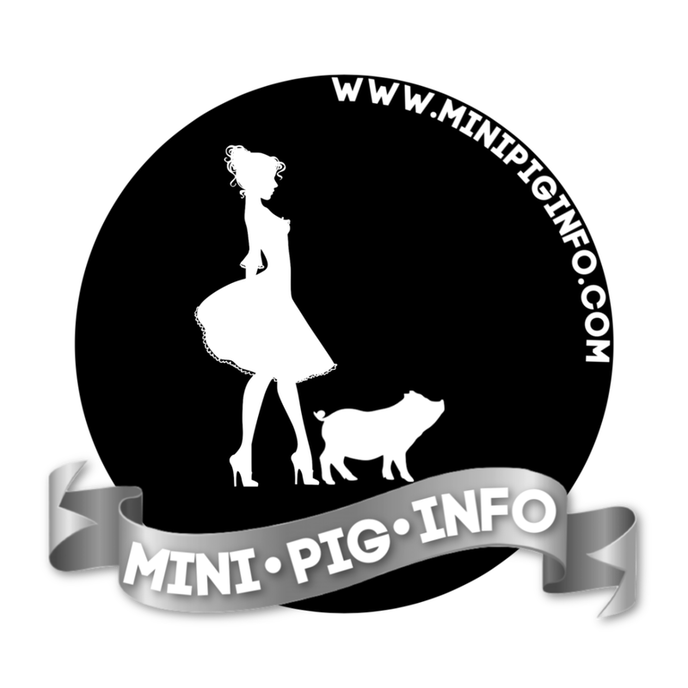
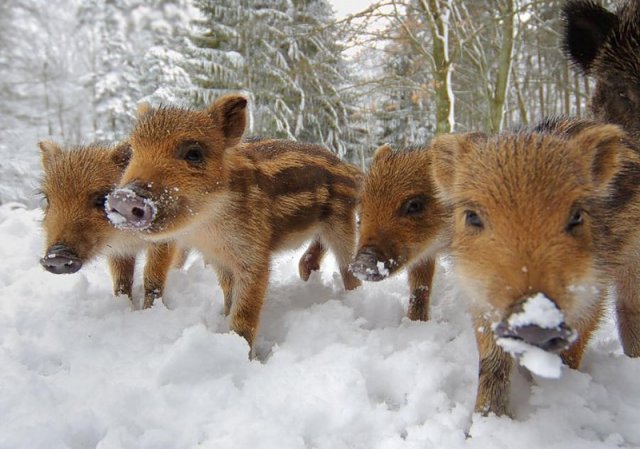
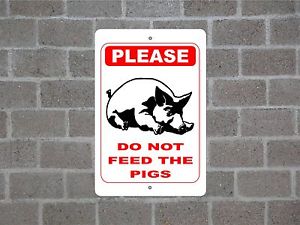
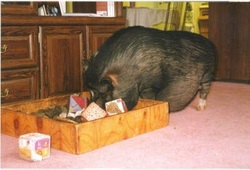
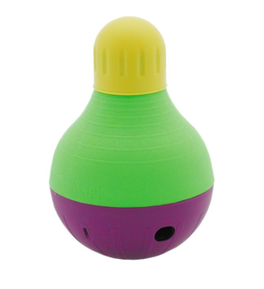
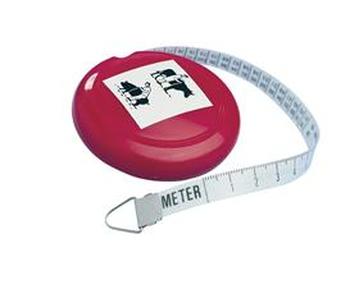
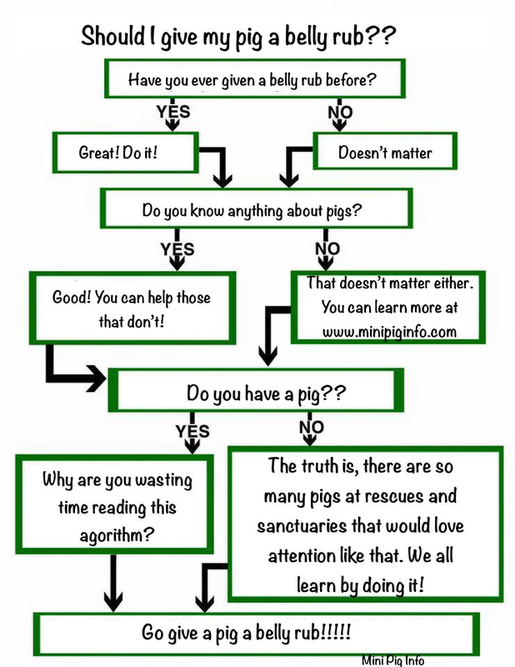
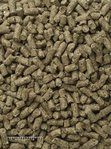
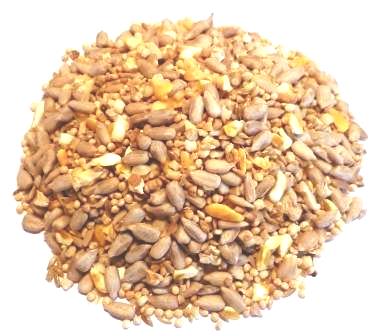
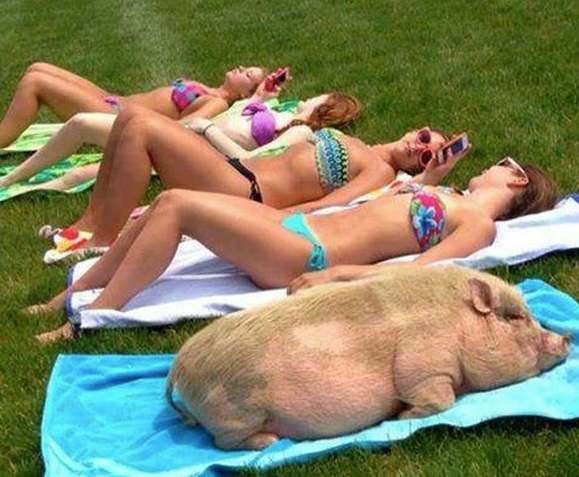
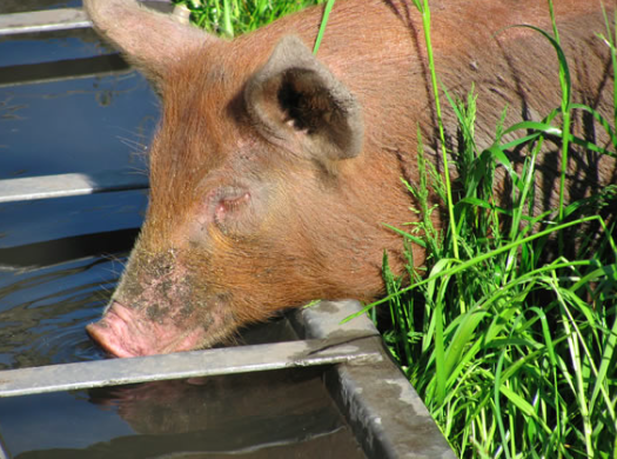

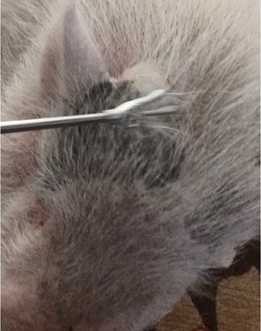
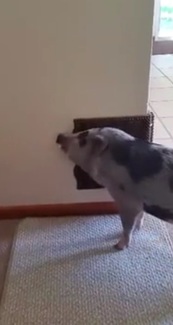

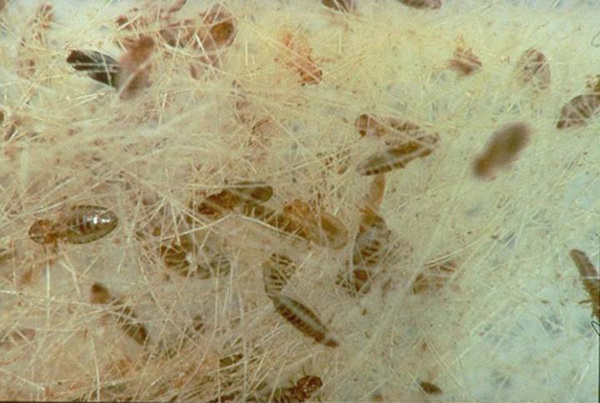
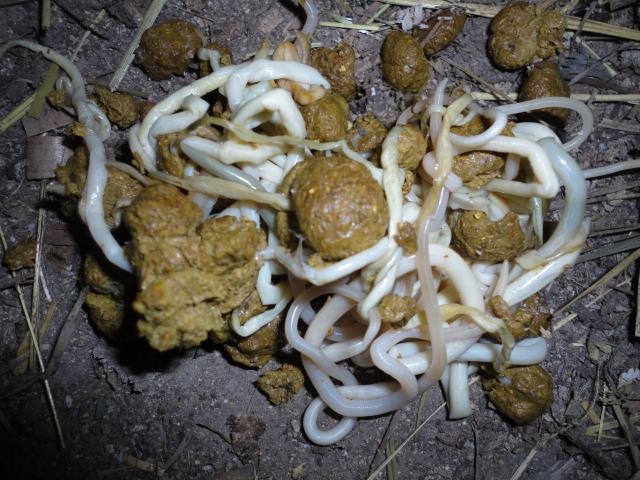
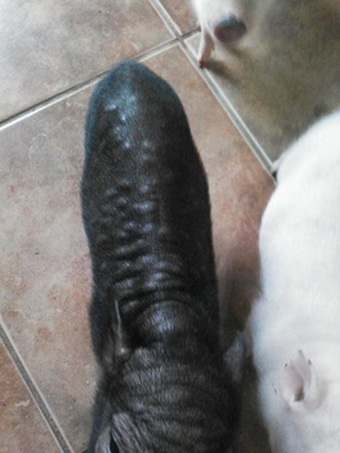
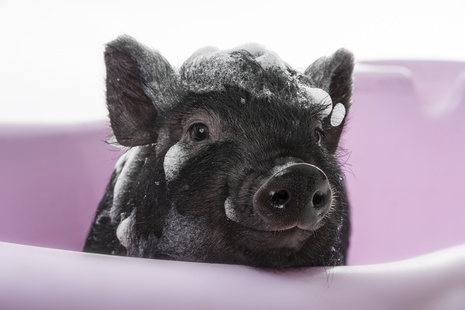

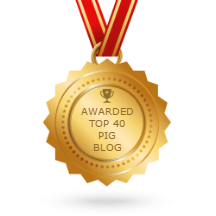
 RSS Feed
RSS Feed